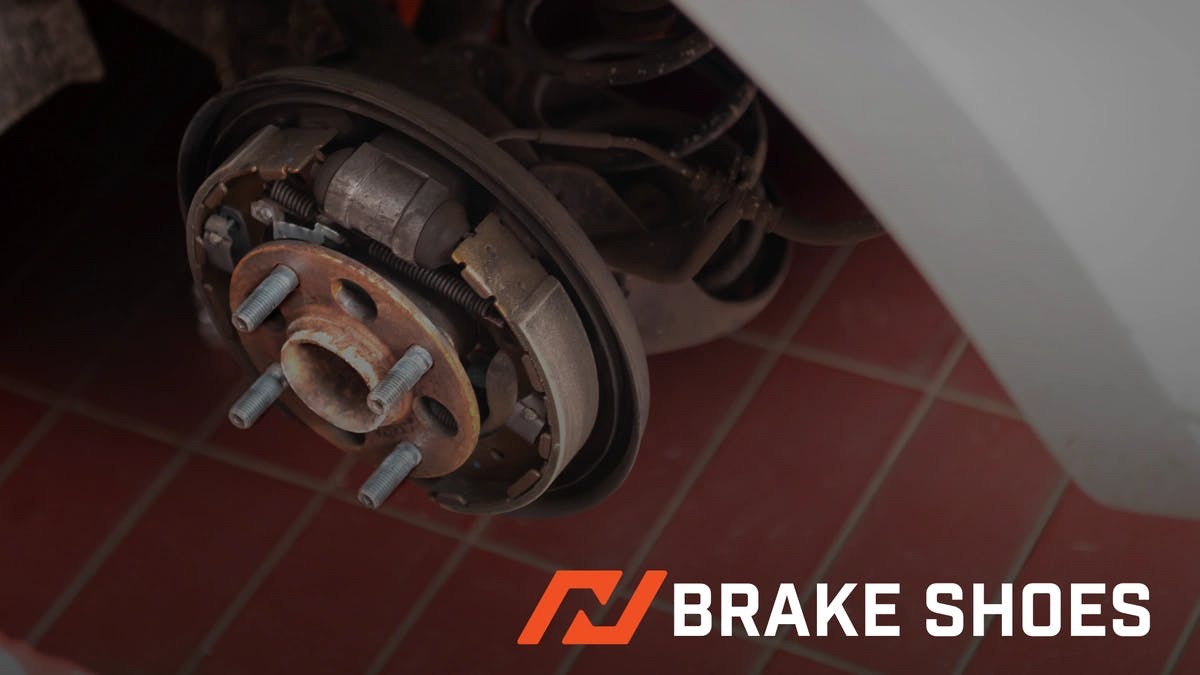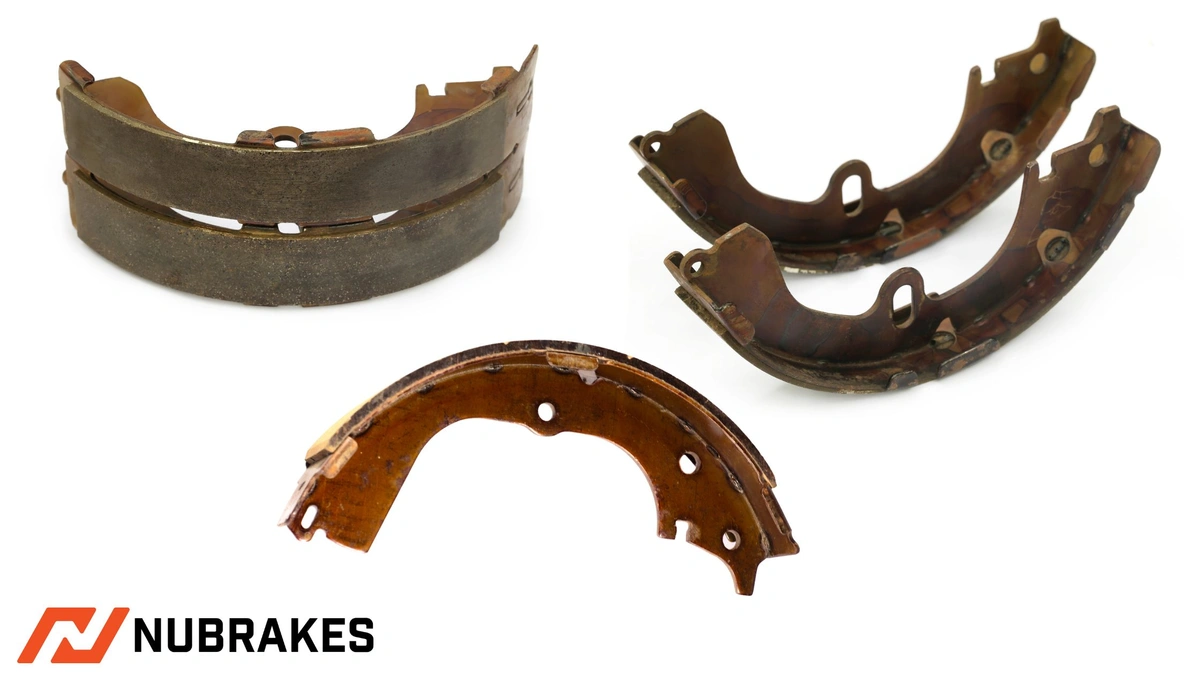Brake Shoes: Your Ultimate Guide to Safe Stops
What is a Brake Shoe?
Brake shoes serve as crucial components in your vehicle's braking system, particularly within drum brakes. They can be likened to 'claws' that seize the spinning brake drum, inducing deceleration when you depress the brake pedal.
They are usually made of a material called friction material, which can be organic, semi-metallic, or ceramic in nature. The article should make it clear that it's not necessarily a blend of these materials.
With time, the part of the brake shoe in direct contact with the drum, known as the brake lining, can experience wear and tear and require replacement. Regular inspection of these components is imperative, as deteriorated brake shoes can diminish your vehicle's braking efficacy and potentially jeopardize safety.
Key Takeaways
|
Brake Shoes vs. Brake Pads
Brake pads and Brake shoes are vital parts of a vehicle's braking system, each designed for different brake types. Brake shoes, found in drum brakes, are crescent-shaped with friction material on the outside.
When you press the brake pedal, the shoes push outwards against the drums to slow your car down. Conversely, brake pads are flat, rectangular, and used in disc brakes. They work by getting squeezed against the rotors when you brake, creating friction to slow your wheels.
Although both wear down over time, technological advances make brake pads usually last longer, dissipate heat better, and provide stronger stopping power. That's why they're the go-to for modern vehicles, while brake shoes are common in older models and some parking brakes.
Here is a more in-depth comparison between the two:
|
Features |
Brake Shoes |
Brake Pads |
|
How they work |
Stop the car by pushing outward against a brake drum |
Stop the car by clamping onto a disc called a rotor |
|
Typical Usage |
Commonly found in rear-wheel drive vehicles, trailers, heavy-duty trucks, or four-wheel drives and OLDER VEHICLES |
Primarily used in front-wheel drive vehicles, but can also be found in the rear of many MODERN CARS |
|
Efficiency |
Generally considered less efficient |
Generally considered more efficient due to better heat dissipation |
|
Position |
Located inside a brake drum |
Positioned around a rotor in a disc brake system |
|
Wear and tear |
Tend to last longer as they have more friction material - the lifespan of brake shoes or pads depends on various factors like driving habits, vehicle weight, and material quality. |
Tend to wear out faster due to high heat generation - the lifespan of brake shoes or pads depends on various factors like driving habits, vehicle weight, and material quality. |
|
Replacement difficulty |
More complex to replace due to their location within the drum |
Easier to replace as they are more accessible in a disc brake system |
|
Heat Dissipation |
Lower heat dissipation |
Better at dissipating heat due to the exposed design |
|
Performance in wet conditions |
May underperform in very wet conditions due to water getting trapped in the drum |
Perform better in wet conditions as water is easily shed away from the rotor |
Please note that the efficiency and performance of brake shoes and brake pads can vary depending on the specific vehicle, the quality of the parts, and how well they are maintained. It's always best to have your brakes inspected regularly by a professional to ensure they're in good working condition.
Signs you have to change your brake shoes
Squealing noises
Brake shoes, when worn, will create a scraping noise on the inside of the drum or create a squeaking noise when the brake shoe becomes dusty.
More effort to brake
As brake shoes wear out, you'll need to press harder on the brake pedal to come to a complete stop which becomes more dangerous over time.
Vibrations in the brake pedal when the brakes are used
Powerful vibrations in your brake pedal should be an indication that your drum brakes are wearing down.
Loose or “spongy” feeling with the brake pedal
A loose feeling when your press down on your brake pedal indicates that there may be something wrong with your brakes, and you should get this examined by a mechanic immediately.
Brake light warning on the dashboard
If you see a brake light warning that your brakes must be replaced, don't hesitate to contact a mechanic right away to have them inspected and replaced as soon as possible.
Driving with worn or faulty brakes can be extremely dangerous and may lead to accidents or damage your vehicle.
A professional mechanic will be able to diagnose the issue, provide the necessary repairs or replacements, and ensure that your vehicle is safe to operate on the road.
How to maintain Brake Shoes?
Slow down gently
When you brake quickly, your brake shoes must work harder to stop your car, thus creating premature wear and tear. Slowing down gradually extends the life of your brakes.
Maintain a healthy car weight
When your vehicle is heavier than usual, your brakes must compensate for the increased kinetic load, forcing them to work harder and resulting in premature wear and tear.
When possible, use engine braking
Consider pulling your foot off the accelerator to deactivate your engine at low speeds when driving a manual car. You can extend the life of the friction material in your brake shoes by not relying on your brakes to slow down your car.
“Using engine brake to extend the life of brake shoes applies more to manual transmission vehicles.
Engine braking in automatic transmission vehicles can be more complex and may not always result in the same benefits.”
Patrick Haley
Operations Manager Nubrakes Mobile Brake Repair
When should I replace my Brake Shoes?
You should ideally replace your brake shoes every 25,000 to 65,000 miles, but this can vary depending on your specific vehicle. It's a good practice to inspect them with each oil change to catch any wear early.
If you notice any warning signs of worn brake shoes - such as unusual noises, vibrations, or decreased stopping power - contact a mechanic right away.
To replace your brake shoes, you'll need gloves, a mask, high-temperature grease, brake fluid, brake spring pliers, hold-down remover, drip tray, brake cleaner, and brake hardware. Always prioritize safety and, unless you're experienced, it's best to leave this task to professionals.
Staying safe on the road is your priority.
Don't compromise your safety with worn-out brake shoes.
At Nubrakes Mobile Brake Repair, our team of experts will conduct a thorough inspection and recommend a brake shoe replacement, if necessary.
Give us a call now for a convenient, reliable service!
References
- https://www.howimportant.com/important-tips-on-replacing-the-brake-shoe-on-your-own/
- https://www.long-way.net/article/Is-the-brake-shoe-important
- https://www.wikimotors.org/what-are-brake-shoes.htm
- https://tataautocomp.com/aftermarket/product/brake-shoes/



